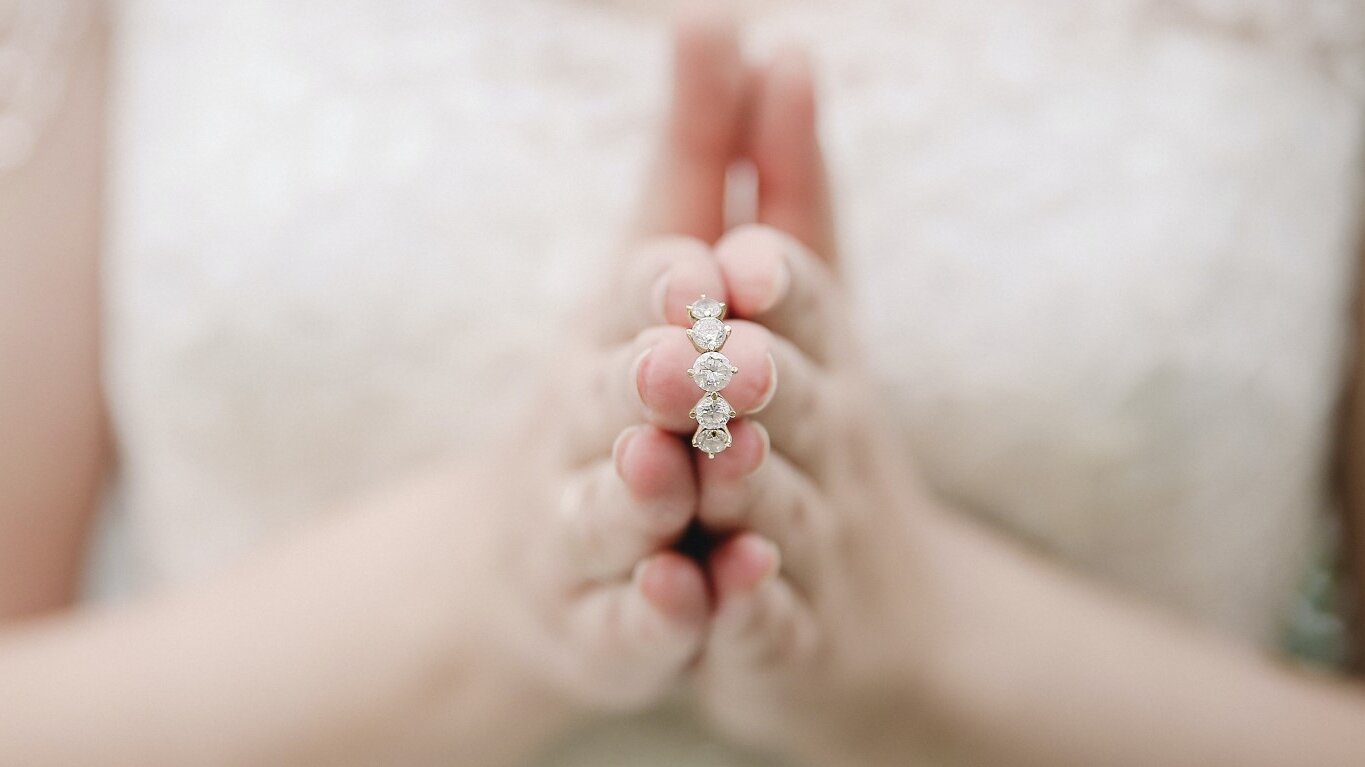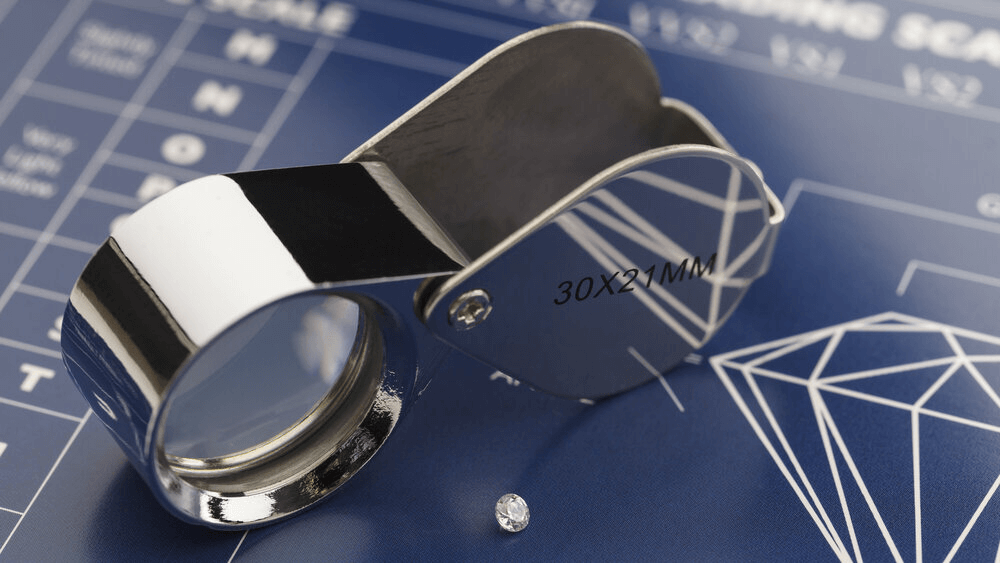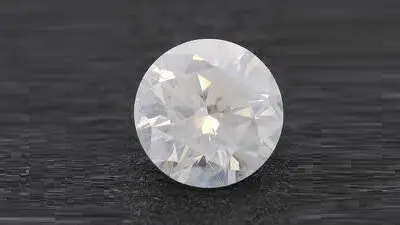The Dark Side Of Diamonds: Black Spots

By Gary A.

Edited by Olivia H.
Published Mar 26, 2022
Edited on Dec 18, 2024
Inclusions like black spots can be part of a diamond’s natural beauty, and understanding their impact is key to making a confident and informed purchase decision.

- 7 Quick Tips for Understanding Black Spots in Diamonds
- Introduction
- Defining Black Spots in Diamonds
- The Science Behind Black Spots in Diamonds
- Evaluating Black Spots: A Buyer’s Guide
- Navigating the Myths: What You Need to Know
- Our Expert Take
- 10 FAQs
Before we dive deeper into the specifics, here are some practical tips to help guide your decision-making process:
7 Quick Tips for Understanding Black Spots in Diamonds
- Tip 1:Learn About Black Spots: Black spots in diamonds are usually tiny inclusions of uncrystallized carbon. They can vary in size and visibility. Educating yourself about these natural occurrences can help you understand their impact on the diamond’s overall appearance and value.
- Tip 2:Examine the Diamond Under Various Lighting Conditions: Inspect in Different Lighting: Check the diamond under multiple lighting sources. Black spots can be more or less visible under different lights. Natural sunlight, LED, and fluorescent lighting can all give you different perspectives on the visibility of black spots.
- Tip 3:Consider the Size and Location of Black Spots: Spot Size and Placement Matters: Pay attention to the size and location of any black spots. A small black spot near the edge of the diamond might be less noticeable, while a larger spot in the center can be more visible and impact the stone’s brilliance.
- Tip 4:Use a Magnifying Glass for Closer Inspection: Magnify Your View: Use a jeweler’s loupe or a magnifying glass to take a closer look at the diamond. This can help you identify the number of black spots, their size, and how they affect the overall appearance of the stone.
- Tip 5:Assess the Impact on Sparkle and Brilliance: Check for Brilliance and Fire: Observe how light interacts with the diamond. Black spots can sometimes affect how light refracts within the diamond, impacting its sparkle and brilliance. A diamond that maintains its sparkle despite having black spots may still be a good choice.
- Tip 6:Weigh the Aesthetic Against Value: Balance Aesthetics with Value: Remember that some black spots can only be seen under magnification and won’t affect the diamond’s beauty to the naked eye. Weigh the visibility of black spots against the overall aesthetic appeal and value of the diamond.
- Tip 7:Explore Different Diamond Shapes and Cuts: Explore Shapes and Cuts: Certain diamond shapes and cuts can mask the appearance of black spots more effectively. For example, brilliant cuts like round or princess can hide inclusions better than step cuts like emerald or asscher.
Now that you’ve got these practical tips, use Jeweler AI below to find the perfect engagement ring that suits your style and budget:
Introduction
It is a rare occurrence for a diamond to be labeled ‘perfect’. Flawless diamonds – or, in other words, diamonds with no internal flaws identifiable under strong magnification – are incredibly rare, and many jewelers will go their entire lives without seeing one in person.
Even the world’s most prestigious jewelers – Cartier, Tiffany & Co., Van Cleef & Arpels – utilize diamonds within their work that are not technically perfect. Under strong enough magnification, natural defects known as inclusions will often be identifiable.
Most shoppers, by the time they are ready to invest, understand that finding a flawless diamond is not only out of the question but also a waste of money. Many diamonds featuring inclusions that, under 10x magnification, look pretty significant still appear flawless to the naked eye.
Nevertheless, eye cleanliness isn’t an exact science. One diamond graded SI2 may look totally fine and beautiful, while another diamond with the same clarity grade may look visibly included. Some of these inclusions will appear as black spots, visible through the diamond’s table, crown, or pavilion.
Here’s what you need to know.
Defining Black Spots in Diamonds
Black spots are fragments of uncrystallized carbon, located deep within the diamond’s internal structure.
As the name suggests, they appear as tiny, dark flecks. A diamond may have just one or two black spots or many, many black spots scattered throughout its center. Other mineral crystals can cause colored spots within a diamond, but black is almost always caused by carbon.
If your diamond has a substantial area of reduced light running through it – a totally different kind of black spot – then this could be an example of the bow tie effect.

The Science Behind Black Spots in Diamonds
Black spots are caused during the diamond’s formation, which means that any diamond you encounter with black spots developed them long, long before they were even mined from the earth – over a billion years before.
Diamonds are carbon. While most of them are not totally chemically pure (meaning that they do contain traces of other elements trapped within them) the only element that is actually required for a natural diamond to come into existence is carbon.
For the diamond to form, the carbon has to be subjected to intense heat and pressure over an incredibly long span of time. Very gradually, that carbon begins to crystalize and form into rough diamonds.
Diamonds are a great example of the raw power of nature, but that raw power does not produce ‘perfect’ results every time. Sometimes, the results of that power are highly valued – for instance, in fancy colored diamonds, which are often created as a result of chemical impurities – but others, like black spots, are undesirable.
Identifying Diamond Black Spots
You might be able to see them with your naked eye but, if not, you’ll be able to identify them by looking at your diamond’s GIA report, which features a diamond plot detailing the location of most of the diamond’s inclusions.
There may not be any reliable answer to the old riddle about trees falling in empty woods, but how about this one: if a diamond features a black spot, but it’s too small to see with the naked eye, does it even matter?
In our opinion, no, it doesn’t matter. There are a few types of inclusions we would urge our readers to avoid at all costs (including laser drill holes) but, in general, provided the inclusion is not located right at the diamond’s surface, and provided you can’t see it with your own eyes, it shouldn’t deter you from an otherwise great investment.
In any case, you’ll want to go carefully through the specifics of your diamond’s clarity, as they have been listed within the GIA report. The GIA’s diamond graders study the diamond at 10x magnification, which means that they’ll be able to identify a lot more than you could on your own.
Black spots will be represented on a GIA diamond plot by a small, red circle. This symbol is used to identify any crystals (of any color) within the diamond.
Evaluating Black Spots: A Buyer’s Guide
You can identify any black spots through your diamond’s GIA report. The clarity characteristics will be represented on a small diagram, which will show you what you can’t see without a strong magnification tool like a jeweler’s loupe. The GIA’s diamond graders study the diamond at 10x magnification, which means that they’ll be able to identify a lot more than you could on your own.
Then again, if you can’t see them without magnification, you shouldn’t consider black spots to be a write-off for an otherwise perfect diamond.
There may not be any reliable answer to the old riddle about trees falling in empty woods, but how about this one: if a diamond features a black spot, but it’s too small to see with the naked eye, does it even matter?
In our opinion, no, it doesn’t matter. There are a few types of inclusions we would urge our readers to avoid at all costs (including laser drill holes) but, in general, provided the inclusion is not located right at the diamond’s surface, and provided you can’t see it with your own eyes, it shouldn’t deter you from an otherwise great investment.

Visibility and Impact on Value
If you can easily see a noticeable black speck in a diamond, then it will likely be given an I1 or I2 clarity grade – potentially SI2 if it’s a particularly large diamond. Diamonds with an I1 or I2 clarity grade tend to be very cheap, with a one carat I1 diamond falling around the $1,800 mark.
If, however, it features black spots that aren’t visible to the naked eye, then the clarity grade could be much higher – say, around the VS2 or SI1 mark. These diamonds are more expensive, but they offer a lot more value for money since they appear flawless, but prove much more affordable.
An eye clean, one carat diamond with minor black spots could cost anywhere between $2,000 and $20,000, depending on its grades for cut and color.
Navigating the Myths: What You Need to Know
The biggest myth out there is that diamond black spots can get worse over time – but this is simply not the case. Internal flaws are caused long, long before the diamond even makes it to the earth’s surface and are, quite literally, ‘set in stone’ by the time you purchase your diamond.
By that, we mean that any black spots identifiable within your diamond will stay exactly as they are, no matter how many years go by. They don’t grow, darken, or multiply, and are totally locked within your diamond’s internal structure.
The only thing that really makes a minor inclusion worse is an artificial clarity enhancement, since that introduces a totally new problem for the diamond, and makes it very likely that the stone will start to look worse after a few years of wear.
Our Expert Take
If they impact the stone’s beauty, then you’ll definitely want to walk away and find another option. If they’re only visible under magnification, and not located right at the surface of the diamond, then you don’t need to worry about them.
What we’re describing here is the difference between a visibly included diamond and an eye clean diamond. Or, in other words, we’re describing the difference between a total waste of money, and a wise investment.
WilYou is all about getting you the best value for your money, and that starts with ensuring eye clean options from the higher end of the clarity grade spectrum to the more affordable grades like SI1 and SI2. Unlike other ‘big name’ online retailers, we exercise a very strong quality control process over our diamonds, because we want to ensure that you make the right choice the first time round.
10 FAQs
- Q: What are diamond black spots?
- A: Diamond black spots are natural inclusions, typically made of uncrystallized carbon, that form within the diamond during its formation deep within the Earth.
- Q: Do black spots affect a diamond’s overall value?
- A: Yes, black spots can affect a diamond’s value. The impact depends on their size, number, and location. Smaller, less visible spots have a lesser impact on value compared to larger, more noticeable ones.
- Q: Can black spots be removed from a diamond?
- A: Technically, black spots can be reduced or altered through processes like laser drilling, but this can affect the diamond’s integrity and is generally not recommended for maintaining natural value.
- Q: Are black spots in diamonds bad?
- A: Black spots are not necessarily “bad”; they are natural characteristics. Some buyers may even find them appealing for their uniqueness, while others may prefer diamonds without visible black spots.
- Q: How can I identify black spots in a diamond?
- A: Black spots can be identified by closely inspecting the diamond under magnification, such as with a jeweler’s loupe, especially under different lighting conditions.
- Q: Are diamonds with black spots cheaper?
- A: Diamonds with noticeable black spots can be less expensive than those without visible inclusions. However, the price also depends on other factors like cut, color, and carat weight.
- Q: Is it common to find black spots in diamonds?
- A: Yes, it’s quite common to find black spots in diamonds, as they are a natural result of the diamond’s formation process.
- Q: Do black spots compromise the durability of a diamond?
- A: Black spots themselves do not typically compromise a diamond’s structural integrity unless they are significantly large or combined with other types of inclusions that weaken the stone.
- Q: Can black spots in a diamond get worse over time?
- A: No, black spots in a diamond do not worsen over time. They are stable and will remain the same throughout the lifetime of the diamond.
- Q: Should I buy a diamond with black spots?
- A: The decision to buy a diamond with black spots should be based on personal preference and budget. If the spots are not visible to the naked eye and you appreciate the uniqueness they bring, it can be a good choice.
Discover the unique charm of diamonds with Jeweler AI – Your guide to the perfect engagement ring.
FOLLOW-UP GUIDE SERIES





















